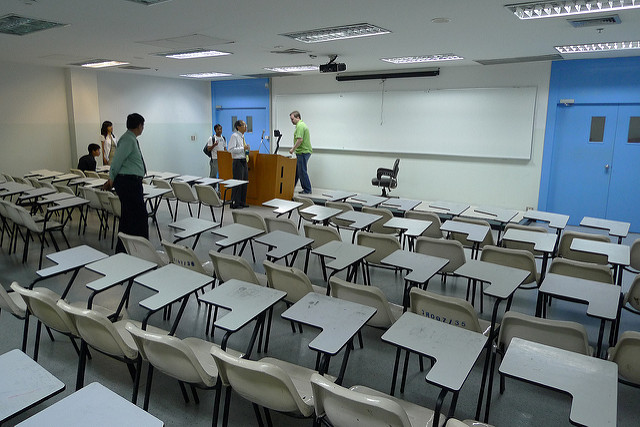5 modern TEFL teaching trends you’re behind on
Modern TEFL teaching trends are changing all the time. In the past decade alone they’ve flitted from an obsession with immersion and teacher talk time to a penchant for tech and internet-based learning. Let’s take a look at some of the most up-to-date movements in the industry, to see the sort of things our new EFL-ers will be delving into…

Use of pop culture in the classroom
It looks like the days of the drab, grey tome of gerunds and past participles are numbered, because one of the real TEFL teaching trends of today is the adoption of more creative and outlandish ideas in the classroom. This is perhaps most noticeable in the use of pop culture texts as source material, with some pioneers using Game of Thrones and other books and TV dramas to kick-start learning. Just imagine being the guy who ditched the stale spelling exercise for the twists and turns of Middle Earth, the enthralling characters of Westeros, or the tunes of the latest Eurovision – the students would just love it! And we’re not just talking about whacking in a DVD and kicking-back to watch your favorite episode (that’s never going to be an innovative trend – sorry!). We’re talking about harnessing the power of pop culture to really hone that target language. Winter is coming – present continuous lesson, perhaps?
Increased use of web-based tech (obviously)
The rise of the web has always been touted as the next big thing in TEFL teaching, but today, as new apps and websites and programs related to language learning pop up almost every day, it’s fair to say that the digital era is already with us! The possibilities with this one are seemingly endless too. You can employ tried-and-tested immersion systems like Rosetta Stone (if you’re school’s got the dosh, of course), or get your kids learning via social media with things like Duolingo. Or, you can set up buddying systems with native speakers in other countries using Skype, use social media like Facebook and Twitter for reading and writing exercises, or settle for a simple pen pal that doesn’t require snail mail to cross from China to England, but rather just the click of a button!

A focus on continuous learning
Of all the TEFL teaching trends listed here, this one might just be the vaguest. But stick with it, because the idea is simple: Expand EFL learning beyond the walls of the classroom. It’s something curriculum planners have been trying (and half failing) to do for years with the dreaded bulk of homework. However, with more and more platforms available to connect teachers to learners, it’s now possible to create tasks which see students engaging with target language whenever their away from their desk. Think about setting a challenge to upload Instagram snaps with a proper description, or make a Facebook status using the present continuous – not only is it (kind of) fun, but it’s also super-easy to check and mark!
Early-start teaching
With the evidence piling on that the younger you start immersive teaching techniques the quicker those children will take to the lingo, it’s hardly surprising that more and more countries are lowering the age of their state EFL tuition. The trend has been particularly noticeable in the Far East and the Middle East, with countries like Japan, the UAE, and Vietnam all jumping the bandwagon. That’s great news if you had the cascading rice terraces of Sapa in your sights, or the shimmering sands of the South China Sea, the mystical Shogun palaces of Kyoto, or the shifting sands of the Arabian Desert. Sorry, did I get just a little carried away there? Yep, so, younger classes = better language skills.

A move towards generalist English teachers
Bad news for the natives (maybe) but good news for everyone else, the move away from needing every teacher to be a natural-born English speaker is perhaps one of the biggest TEFL teaching trends currently in swing. Sure to shift the industry, it’s going to see a whole load more people become passionate about getting qualified (with myTEFL, of course). The move towards non-specialist English language teachers has been particularly marked in countries where tuition is most in demand, like Thailand, the Philippines, Bangladesh and Sri Lanka.
If you’re pining to start that TEFL adventure and get abreast of the most modern TEFL teaching trends, then be sure to check out our courses page. And if you’ve something to add to this list of TEFL teaching trends, we’d love to hear it in the comments below…

